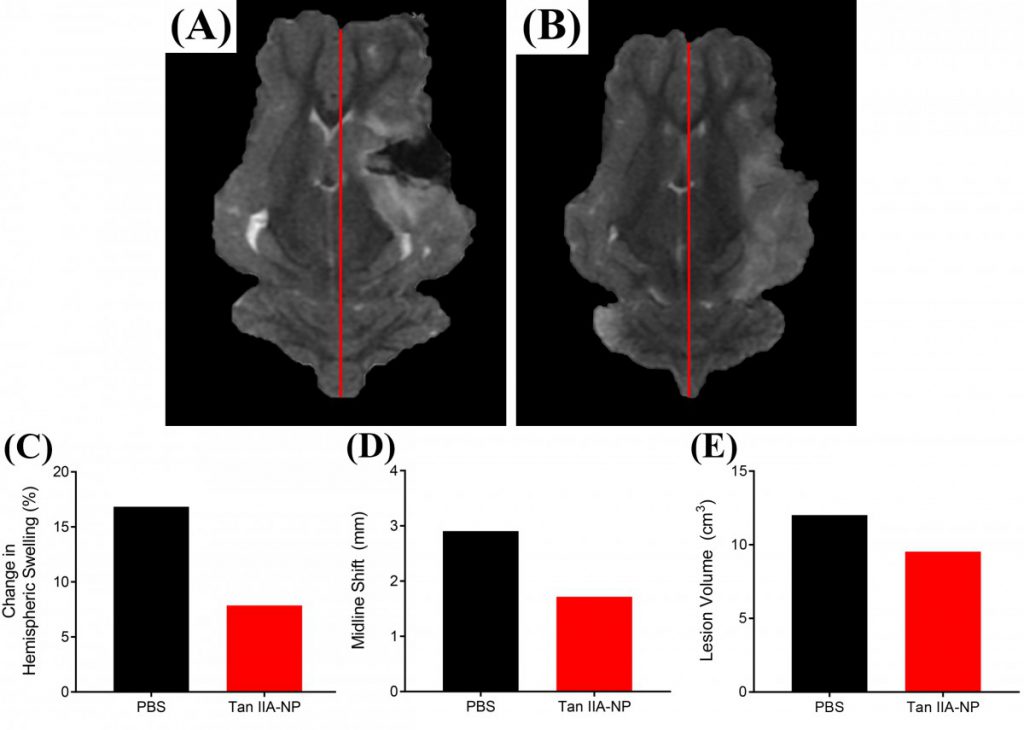Although the absolute number of new stroke patients has increased every year, few Food and Drug Administration approved treatments are available to patients1,2. Tanshinone-IIA (Tan IIA) is a promising potential therapeutic for ischemic stroke that has shown success in preclinical studies, but led to inconsistent efficacy results in patients. The physical properties of Tan IIA, including short half-life and low solubility, suggest that a poly (lactic-co-glycolic acid) (PLGA) nanoparticle (NP) delivery may lead to improved and consistent therapeutic effects. Consequently, the TNRR Laboratory developed Tan IIA-loaded nanoparticles (Tan IIA-NPs) to evaluate their therapeutic effects on cerebral pathological changes and consequent motor function deficits in a our pig ischemic stroke model3.
In in-vitro assays, Tan IIA-NPs treated cells showed a reduction in superoxide dismutase (SOD) activity as well as TNF-α and IFN-γ inflammatory cytokines, thus demonstrating antioxidative and anti-inflammatory effects. In vivo, MRI results demonstrated that stroke pigs treated with Tan IIA-NPs had reduced hemispheric swelling, midline shift, and lesion volumes. Tan-IIA NP treatment also lead to acute reductions in diffusivity, white matter damage, and hemorrhage post-stroke. Tan IIA-NPs also lead to a reduced percentage of circulating band neutrophils post-stroke, thus suggesting a mitigated immune response. Spatiotemporal gait deficits including cadence, cycle time, step time, swing percent of cycle, and stride length, as well as changes in relative mean pressure were also less severe post-stroke in Tan IIA-NP treated pigs relative to control pigs.
These findings demonstrate Tan IIA when encapsulated in NPs mitigates cerebral injury, thus leading to less severe gait deficits in a translational pig ischemic stroke model. With stroke as one of the leading cause of functional disability, and gait deficits a major component of such disability, these results suggest acute Tan IIA-NP administration may improve functional outcomes and the quality of life for future stroke patients.

- 1Feigin, V.L., B. Norrving, and G.A. Mensah, Global Burden of Stroke. Circ Res, 2017. 120(3): p. 439-448.
- 2Benjamin, E.J., et al., Heart Disease and Stroke Statistics-2019 Update: A Report From the American Heart Association. Circulation, 2019. 139(10): p. e56-e528.
- 3Waters, E. and Kaiser, E., et. al., Intracisternal administration of tanshinone IIA-loaded nanoparticles leads to reduced tissue injury and functional deficits in a porcine model of ischemic stroke. IBRO Reports, 2020. 10: p. 18-30.